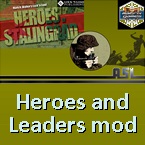asl3d
Posts: 6531
Joined: 2/6/2017
Status: offline

|
Fire discipline
Even when Japanese tactics were appropriate (or at least adequate), the advantages of careful reconnaissance and surprise were often thrown away by poor fire discipline or, far worse, by unnecessary noise. Resorting to noisy ruses to generate enemy "jitter" fire, and so reveal dispositions, denies an opponent sleep, generally demoralizes him or causes casualties from "friendly fire" and is a valuable technique and by no means unique to the Japan Army, but the Japanese tended to persist with such ploys long after their enemy was wise to them—with predictable results. Moreover, the Japanese were also indifferent to (and careless in) the need to remain stealthy when preparing to attack; they would blow bugles, shout, sing, chant, chatter, throw firecrackers or taunt their foes, especially at night. Such behavior was not always due to the need to boost their own morale, but was often caused by drunkenness or the influence of narcotics used to ward off the pangs of hunger. And it smacked of a profound contempt for their foes (which was, increasingly, unjustified) which the Japanese soldier—on an individual basis—only lost if he was lucky and survived long enough. Japanese troops were initially "disgusted" by the reluctance of Filipino or US soldiers to conduct banzai charges on Bataan, while elsewhere it was alleged that Amer-icans suffered from mental derangement, a morbid fear of the Japanese soldier, and thus were prone to nervous breakdowns or even suicide. "The Yankees are cry-babies," claimed the Japanese propagandists, while their own troops were accorded almost super-natural abilities. The British were regarded as lazy, effete and outdated. As early as the 1900 Boxer Rebellion in China, the Japanese were contemptuous of the open-order tactics used by British colonial troops; the British military attache there reported that the Japanese equated a "good fight" with heavy losses among their own men, and during the Anglo-Japanese assault on Germany's Chinese colony of Tsingtao in November 1914, the Japanese complained of the "slow" (and cautious) advance by their allies (which, however, cost them only 74 casualties compared to Japan's loss of 1866 men). Such contempt extended to the highest levels, and the 1944 Ha-Go offensive in Burma was a classic example of how the Japan Army became "hypnotized" by the previously poor performance of Allied troops, whose allegedly poor fighting qualities became enshrined in a creed which preached that Japan would not be defeated for generations (by which time the Allies would sue for peace). Even in 1945 a former Japanese military attache who had served in the USA assured his men that American troops tended to launch "bold and reckless headlong rushes when the military situation develops badly for them" and urged "a violent surprise attack" in response, illustrating how little the Japanese had the measure of their enemies after nearly four years of war.

 Attachment (1) Attachment (1)
_____________________________
Semper fidelis
|
 Printable Version
Printable Version





































 New Messages
New Messages No New Messages
No New Messages Hot Topic w/ New Messages
Hot Topic w/ New Messages Hot Topic w/o New Messages
Hot Topic w/o New Messages Locked w/ New Messages
Locked w/ New Messages Locked w/o New Messages
Locked w/o New Messages Post New Thread
Post New Thread